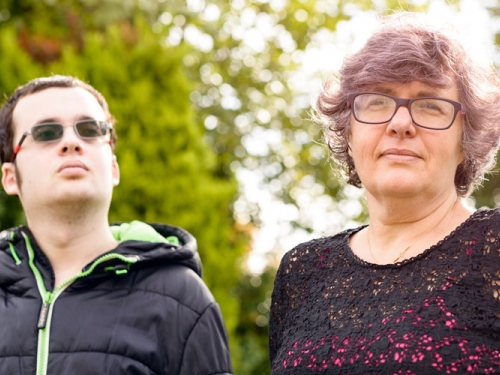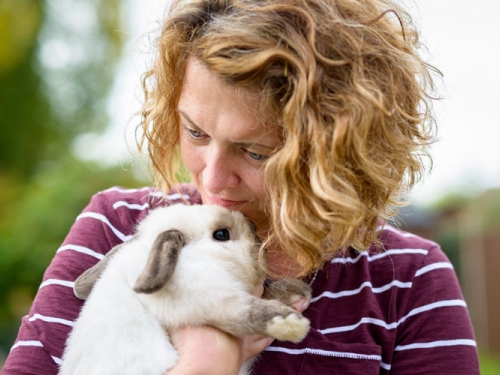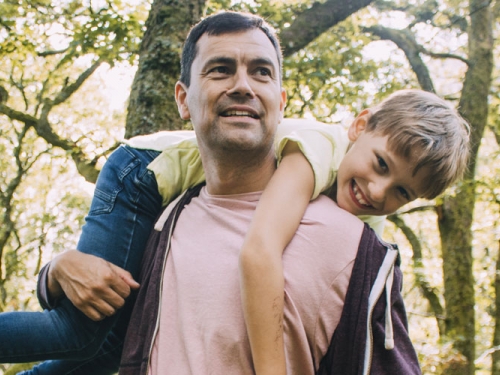Glossary of
nerve tumours Terms
Here we have listed a glossary of terms associated with nerve tumours and NF, the group name for Neurofibromatosis Type 1 (NF1), NF2-related-Schwannomatosis (NF2) and Schwannomatosis (SWN)
Please bear in mind these definitions were published by leading consultants Prof. Gareth Evans, Prof. Rosalie Ferner, and Dr. Sue Huson; in their 2011 publication published by Springer-Verlag London Ltd. Prof. Evans leads our Medical Advisory Board, who collectively review the materials we provide.
Amyotrophy Focal wasting and weakness in NF2, particularly involving the small hand muscles or thigh and may be presenting symptoms of the disease.
Auditory brainstem implant (ABI) ABI is a device that stimulates the cochlear nucleus within the brainstem. It consists of an external sound processor and an internal electrode that is in contact with the brainstem. It is inserted when the auditory nerve is absent or is not functioning after tumour surgery. It helps some people with profound deafness to appreciate environmental sound and aids lip-reading.
Bevacizumab (avastin) Anti-angiogenic drug. Currently used in clinical trial and as treatment in exceptional cases to reduce growth of vestibular schwannomas in NF2.
Bilateral vestibular schwannomas Benign tumours on the eighth cranial nerve that cause hearing and balance disturbance in NF2 patients. Treatment includes surgery, stereotactic radiotherapy (small risk of malignant change), and bevacizumab in exceptional cases. Sporadic vestibular schwannomas are unilateral and develop in middle age.
Bony dysplasia Abnormalities of bone are due to defective maintenance of bone structure in NF1 patients. Include scoliosis, pseudarthrosis, and vertebral scalloping.
Café au lait patches (or café au lait spots) Benign skin pigmentation with smooth contours. Six café au lait patches are diagnostic of NF1, but occur in smaller numbers in NF2. Also seen in patients with Legius syndrome, familial café patches. In the general population 10% may have up to two café au lait patches.
Carcinoid Slow growing neuroendocrine tumour that usually occurs in duodenum in NF1. May co-exist with pheochromocytoma.
Cardiovascular disease Includes congenital heart disease, especially pulmonary stenosis and hypertension. Associated with NF1.
Cataracts Subcapsular lens opacities. Develop in young people with NF2 and may be presenting feature. Do not usually require treatment.
Cerebrovascular disease Includes stenosis, haemorrhage and aneurysm of cerebral arteries and occurs with increased frequency in NF1.
Chiari malformation Structural abnormality in cerebellum and brainstem that pushes the brainstem and cerebellum downward. The resulting pressure may cause outflow obstructions of cerebrospinal fluid. Chiari 1 malformation does not usually cause symptoms and is reported in NF1.
Cochlear implant This is a surgically placed electronic device that is placed into the cochlear and stimulates a functioning auditory nerve to produce a sensation of hearing in deaf persons.
Cognitive problems Commonest complication in NF1 and includes low average IQ with specific learning problems and behavioural problems.
Constitutional mismatch repair deficiency syndrome (CMMR-D) This is a recessive condition caused by bi-allelic mutations in one of four mismatch repair genes. Affected individuals have a predisposition to central nervous system, haematological, and bowel malignancy. The phenotype includes multiple café au lait patches and some cases actually have somatic NF1 mutations.
Cutaneous neurofibroma Forms on the skin in people with NF1, always benign and may be purplish in colour. Isolated neurofibromas may be sporadic. Cause itching, stinging and cosmetic problems.
Disfiguring plexiform neurofibroma Large diffuse neurofibroma of the face, trunk or limbs that impinges on surrounding structures or is associated with bone hypertrophy. Risks of haemorrhage and delayed wound healing are high.
Dural ectasia Is visible on magnetic resonance imaging (MRI) as out-pouching of the dura (the outer covering of the spinal cord) and is asymptomatic or occasionally causes pain and neurological deficit in NF1 patients.
Ependymoma Central nervous system tumour arising from ependymal cells and frequently develops in brainstem or spinal cord (particularly upper cervical region) in NF2. Maybe indolent or cause progressive neurological deficit.
Epilepsy Seizures occur with increased frequency in NF1 and NF2, and all seizure types occur. May be associated with tumours or underlying cortical dysplasia.
Facial mononeuropathy This may occur in NF2 without an underlying schwannoma and is probably due to Schwann cell proliferation.
Familial café au lait patches In this rare subtype, families develop café au lait patches +/- skin fold freckling but do not develop NF as adults and have a much lower risk of complications. Two genetic causes have so far been identified, SPRED1 mutations (Legius syndrome) and the c.2970-02972 delAAT mutation in the NF1 gene.
Freckling Benign skin pigmentation under the arms, around the neck, in the groins, diagnostic of NF1.
Gastrointestinal stromal tumour Mesenchymal tumours that may be multiple and usually found in small bowel in NF1. They cause abdominal pain, anaemia or haemorrhage.
Gliomas Arise from the glial or supporting cells of the nervous system, may occur in brain or spinal cord, but mainly involve the brainstem and cerebellum in NF1. Most are low grade but some may behave aggressively. (See also, optic pathway gliomas).
Glomus tumour Benign tumour of glomus body which causes exquisite pain in nail bed and may be multiple in NF1 patients.
Legius syndrome This is a milder phenotype than NF1 with café au lait patches, freckling but no neurofibromas and with mutation in the SPRED1 tumour suppressor gene.
Lisch nodules Benign asymptomatic raised pigmented lesions on the iris, seen on slit lamp examination and diagnostic of NF1.
Malignant peripheral nerve sheath tumour (MPNST) NF1 patients have a 10% lifetime risk of developing MPNST that may be low, intermediate, or high grade. Presentation is with persistent pain, change in texture, rapid increase in size of a lump or neurological deficit.
Meningiomas Benign tumours that develop in the orbit, brain and spine and may be multiple. Characteristic of NF2 but occurs with increased frequency in NF1.
Merlin (schwannomin) The protein product of the NF2 gene is related to moesin, ezrin, radixin, proteins that control growth and cellular remodelling.
Mosaic NF1 The gene mutation (alteration in the genetic message) occurs after fertilization. The proportion of the body affected by the disease is dependent on the timing of the mutation after fertilization. The commonest form is for one body segment to show NF1 skin changes (segmental NF1).
Mosaic NF2 Mosaic NF2 presents as mild generalized NF2 or NF2 features that are localised to one area of the body (e.g. unilateral vestibular schwannomas and meningiomas).
mTOR mTOR mammalian target of rapamycin is involved in cell growth and proliferation. Rapamycin has been used in clinical trials to treat growing plexiform neurofibromas.
Multiple sclerosis Occurs with increased frequency in NF1, particularly primary progressive multiple sclerosis. The clinical manifestations may be confused with symptoms related to optic pathway gliomas or spinal plexiform neurofibromas.
Neuro-cardio-facial-cutaneous syndromes (also called Rasopathies) The collective term given to the conditions caused by mutations in the Ras-MAPK pathway which include NF1 and Legius syndrome.
Neurofibroma Benign peripheral nerve sheath tumour that occurs on or under the skin or on the spinal nerve roots or nerve plexuses. Composed of Schwann cells, fibroblasts, perineurial cells, and axons in an extracellular matrix (see also cutaneous neurofibroma, subcutaneous neurofibroma, plexiform neurofibroma).
Neurofibromatosis Type 1 (NF1) An inherited neurocutaneous condition that predisposes to benign and malignant tumour formation and is caused by mutations in the NF1 gene on chromosome 17.
NF2-related-Schwannomatosis (NF2) A rare inherited neurocutaneous condition that is characterised by vestibular schwannomas, other benign brain and spine tumours and cutaneous and eye signs. It is caused by mutations in the NF2 gene on chromosome 22.
NF2 neuropathy Axonal peripheral neuropathy which may be motor and sensory and is progressive in some patients.
Neurofibromatous neuropathy (NF1) An indolent motor and sensory neuropathy in NF1. Affected individuals harbour an increased risk of malignant peripheral nerve sheath tumour.
Neurofibromin The NF1 gene product is neurofibromin which regulates cell growth and proliferation by inactivation of p21ras and control of mammalian target of rapamycin (MTOR).
NF1 microdeletions This is the genetic mechanism that causes the disease in approximately 5% of people with NF1. In addition to the NF1 gene the deletion, depending on size, involves a number of other neighbouring genes. Microdeletions are associated with more severe clinical manifestations.
Nonossifying fibromas Cystic lesions of bone in NF1 patients that may be painful or cause pathological fracture.
Optic pathway glioma (OPG) These tumours arise from the glial cells in the central nervous system. They form anywhere on the optic pathway but are commonest in the optic nerves in NF1. Most tumours are indolent and do not need treatment but some cause decreased vision in childhood and require chemotherapy.
Pheochromocytoma Catecholamine secreting tumour, mainly found in the adrenal medulla in NF1. It may be bilateral and is occasionally malignant. It causes hypertension and may coexist with carcinoid tumour.
Plexiform neurofibroma Benign peripheral nerve sheath tumour that grows along the length of the nerve, often involves multiple nerves frequently causing neurological deficit, and may undergo malignant change in NF1.
Positron emission tomography (PET CT) ([18F]2-fluoro-2-deoxy-ᴅ-glucose positron emission tomography computerised tomography) is the optimum way of diagnosing malignant peripheral nerve sheath tumour. It gives qualitative and semi quantitative evaluation of the metabolic activity of a tumour. It should only be used in NCG specialist centres for this purpose and is not useful for assessing schwannomas.
Preimplantation genetic testing Available for people with NF1 and NF2. Healthy embryos are selected on the third day of fetal development.
Pseudarthrosis Causes bowing of the long bones, most commonly the tibia. Fracture occurs after trivial injury in infancy and childhood with delayed healing. The presentation may be mistaken for non-accidental injury instead of NF1.
Renal artery stenosis Associated with hypertension in NF1 caused by dysplasia of blood vessels or aneurysm.
Schwannoma This is a benign nerve sheath tumour composed of Schwann cells and has a capsule. May be sporadic, but multiple lesions are characteristic of NF2 or Schwannomatosis. Malignant change is rare and PET CT does not detect malignant change in schwannomas (see PET CT). In Schwannomatosis, schwannomas form on cranial, spinal, peripheral and cutaneous nerves.
Schwannomatosis This rare condition is characterised by multiple schwannomas (but not eighth nerve schwannomas). May be familial, and the gene is tumour suppressor INI1 (SMARCB1).
Scoliosis Curvature of the spine in NF1 that may be idiopathic or dystrophic and the latter may cause neurological or respiratory problems. Occasionally, it may be associated with an underlying plexiform neurofibroma.
Segmental NF1 (see Mosaic NF1).
Skin schwannomas Skin schwannomas may be subcutaneous, intradermal, or plaque lesions in NF2.
Sphenoid wing dysplasia Defective formation of the skull bones diagnostic of NF1. The temporal lobe may push forward into the orbit and cause pulsating protrusion of the eye.
Spinal cord compression Spinal nerve root neurofibromas may cause pressure on the nerve roots and spinal cord. Many do not need intervention despite the neuroradiological appearances of cord compression, but some cause neurological deficit, particularly in the upper cervical spine, and require surgery.
Spinal neurofibromatosis Hereditary spinal neurofibromatosis is a rare form of NF1 and the characteristic features are multiple spinal neurofibromas with or without peripheral nerve involvement and relatively few café au lait patches.
Statins Lovastatin reverses ras activity, and statin drugs are being used in clinical trial to treat learning problems in children with NF1.
Subcutaneous neurofibroma The firm, discrete neurofibroma under the skin causes pain and neurological symptoms and may become cancerous.
T2 hyperintensities on brain MRI These are asymptomatic lesions that are found especially in the basal ganglia, cerebellum, and brainstem in people with NF1. They do not cause neurological deficit and disappear with age.
Vertebral scalloping This is pronounced curvature of the dorsal part of the vertebral body and is seen on MRI in NF1 patients and is asymptomatic.
Xanthogranuloma Yellowish nodule occurring transiently on the heads, limbs and trunk in NF1 children.




